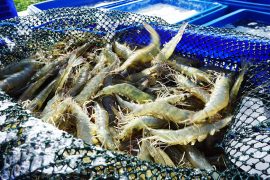
Endangered wild species find forbidden love in domestic animals
The animal kingdom is no stranger to drama, but few stories are as fraught with tension as the forbidden romances that unfold between endangered wild animals and their domestic cousins.
It’s a tale as old as time: boy meets girl, sparks fly. However, in this case, the boy is a 2,000-pound wild yak and the girl is a docile cow. This is a serious issue with far-reaching consequences for both animals and humans.
Love triangle with high stakes
Picture this: you’re a pastoralist, tending to your livestock on a windswept plain. Suddenly, a massive, testosterone-fueled wild camel comes charging toward your herd, intent on wooing your domesticated females. Your only weapons? Sticks and stones. This is a harsh reality faced by herders worldwide.
“Can you imagine being on a treeless plain with an angry, 2,000-pound, testosterone-crazed, giant wild camel or wild yak barreling down on you and with stones as your only weapon? Not much safety there,” says Joel Berger, a professor at Colorado State University and a senior scientist with the Wildlife Conservation Society.
These encounters aren’t just inconvenient; they can be deadly. Pastoralists risk injury or death defending their livestock, and the animals themselves often pay the ultimate price.
Wild males who interfere with herds are sometimes killed in retaliation, further endangering already vulnerable species.
Shrinking dating pool of wild and domestic animals
It’s easy to villainize these amorous wild animals, but their motives are simple: they’re looking for love in all the wrong places.
Many of these species are critically endangered. Their populations have dwindled to a fraction of their former glory.
Human activities often shrink their natural habitats. As a result, these animals seek mates wherever they can find them. This search sometimes leads them to cross paths with humans.
“Before judging these frisky, four-legged Casanovas, understand that their mating pool is limited. For some of these native species, less than 1% exist in the wild,” Berger explains.
When love crosses species lines
The consequences of these interspecies dalliances go beyond mere inconvenience.
Hybridization, the mixing of genes between wild and domestic animals, can dilute the genetic purity of endangered species, potentially weakening their ability to survive in the wild. It can also lead to the spread of diseases between populations.
“From the perspective of genetic diversity, hybridization poses a potential threat to the wild ancestors because continuous introgression with the domestic relatives may gradually erode the genetic integrity of the wild forms, leading to the dilution of the wild gene pool over time,” explain Naresh Kusi, country program director at Himalayan Wolves Project.
Global problem needs domestic solution
This isn’t just a problem in far-flung corners of the world. From the yak herders of Nepal to the reindeer herders of Alaska, pastoralists on every continent grapple with the challenges of keeping wild and domestic animals apart.
Even in the United States, bison and bighorn sheep sometimes crossbreed with their domestic counterparts, raising concerns about disease transmission.
The solutions to this complex issue are as varied as the landscapes where it occurs. The key, according to researchers, is collaboration.
Herders, conservationists, and government officials must work together to develop strategies that protect both livelihoods and endangered species.
Delicate balance between wild and domestic animals
The story of wild and domestic animal interactions is a poignant reminder of the delicate balance between humans and the natural world.
As we encroach upon wild habitats and alter ecosystems, we inevitably create conflicts that require thoughtful solutions.
“There is much value to existence, even for places humans will not visit and for species they might not ever see,” Berger reminds us. “Giving a voice and recognition to the problems can improve conservation needs for both people and endangered species.”
The next time you hear about a wild animal’s ill-fated attempt to woo a domesticated mate, remember that it’s not just a quirky news story. It’s a symptom of a much larger issue, one that demands our attention and compassion.
By understanding the complex factors at play, we can work towards a future where both wild and domestic animals can thrive.
The study is published in the journal Global Ecology and Conservation.
—–
Like what you read? Subscribe to our newsletter for engaging articles, exclusive content, and the latest updates.
Check us out on EarthSnap, a free app brought to you by Eric Ralls and Earth.com.
—–













